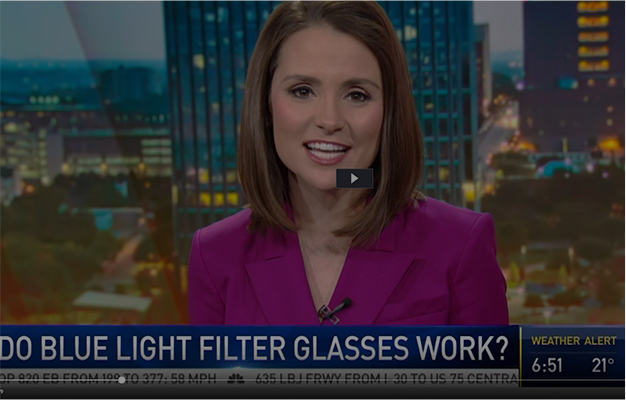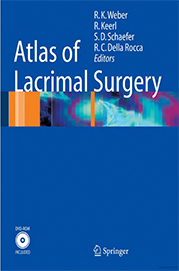Fractures
The eye socket, or orbit, is made up of the bones that surround the eye. The structure of the eye socket is designed to protect the eye from injury. However, if the bones around the eye are hit hard enough, they can break. This is called an orbital fracture. An eye socket fracture can result from being hit directly on the eye or on the bones around the eye. Injuries that can result in an eye socket fracture include falls, motor vehicle accidents, sports injuries or even assault (such as a punch or kick to the bones around the eye).
One type of eye socket fracture is a trapdoor fracture. This type of fracture usually happens in children because their bones are more pliant and flexible than those of adults. Because of this stretchability, the bone beneath the eye can swing down when broken and then swing shut, trapping the muscle that moves the eye down. This causes the muscle to lose blood flow, resulting in pain, severe double vision, nausea and vomiting.
Some eye socket fractures need to be repaired and others do not. The decision as to whether a fracture needs to be fixed is usually based on whether the eye is sunken in, double vision, severity, or muscles that are stuck between bones as well as how large the CT scan shows the fracture to be.
Eye socket fractures that need repair are fixed with surgery. Some fractures, such as a trapdoor fracture, need to be fixed right away while others may be fixed within a couple of weeks after the injury. If you are injured and believe you may have an eye socket fracture, contact our ophthalmologist, Dr. Syed Ahmad, and optometrist, Dr. Mackenzi Cash, immediately or go to the nearest emergency room.
Enucleation
Enucleation is the surgical removal of an eye. Recommending enucleation is one of the most difficult therapeutic decisions in ophthalmology. Other alternatives which create viable options to surgery include cryotherapy, laser photocoagulation, diathermy, chemotherapy and radiation therapy. Removal of an eye is considered a drastic and traumatic measure for most people. Although many patients who require this surgery have no vision in the affected eye, those who do have vision recognize that enucleation will result in instantaneous, permanent, blindness of that eye and that they will require an artificial eye (ocular prosthesis) as a cosmetic substitute for the real eye.
Enucleation is usually performed for several different reasons:
- to remove a malignant tumor that has developed within the eye
- to alleviate intolerable pain in a blind eye affected by a condition such as uncontrollable glaucoma
- to reduce the risk of “sympathetic ophthalmic”
- severe inflammation of unknown cause which may affect the remaining eye when one eye has been severely injured and blinded.
Exenteration
Exenteration is the removal of all of the eye, the associated muscle structures and occasionally
part of the orbital bone (the bone around the eye socket). Exenteration surgery is necessary when there are advanced forms of ocular cancer, orbital and periorbital tumors, and occasionally, other conditions that are potentially fatal or relentlessly progressive which cannot be treated more effectively in other ways.
After other methods have failed, exenteration is employed for treating large tumors found in and around the eye socket, on the eyelid or eyeball, within the optic nerve or on the retina. Exenteration of the eye is typically the only option to entirely eradicate an ocular, cystic or sinus cancer while preventing its recurrence. Thorough examinations using CT scans and ultrasounds are used to
determine the presumed efficacy of exenteration before any final decisions are made.
Thyroid Eye Disease
This is considered an autoimmune eye condition. When the thyroid gland malfunctions, it can produce either too much hormone (hyperthyroid) or too little (hypothyroid). Either imbalance can cause a variety of symptoms. When abnormal hormone production is associated with an offending antibody, eye symptoms can develop (Grave’s disease). The condition, however, is seen in people with no other evidence of thyroid dysfunction, and occasionally in patients who have Hashimoto’s Disease. Most thyroid patients, however, will not develop thyroid eye disease, and if so, only mildly.
Thyroid Eye Disease is known to go through varying degrees of severity and can go into periods of remission as well. When it has been inactive for a period of around a half a year, it’s less likely to recur. Treatments range from lubricating eye drops and ointments to, in very rare cases, surgery. In a very small percentage of patients, orbital decompression may be called for.
Signs and symptoms include:
- pain in the eyes, pain when looking up, down or sideways
- dryness, itching, dry eyes, difficulty wearing contact lenses
- inflammation and swelling of the eye and its surrounding tissues
- swelling in the orbital tissues which causes the eye to be pushed forward — referred to as exophthalmos — which can make thyroid eye disease sufferers appear to have a wide-eyed or bulging stare
- bloodshot appearance to eyes
- double vision (doctors call it diplopia)
- impaired vision
If you think you may need orbital surgery in Plano, Texas, please call Texas Eye & Aesthetic Center today at 972-519-9933 for more information about your treatment options.




